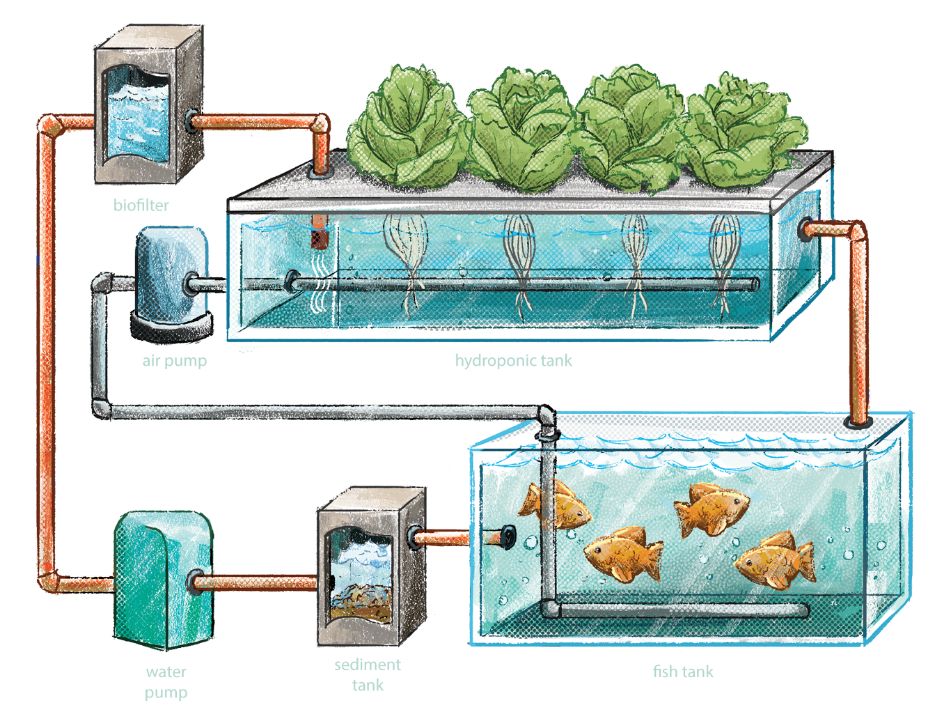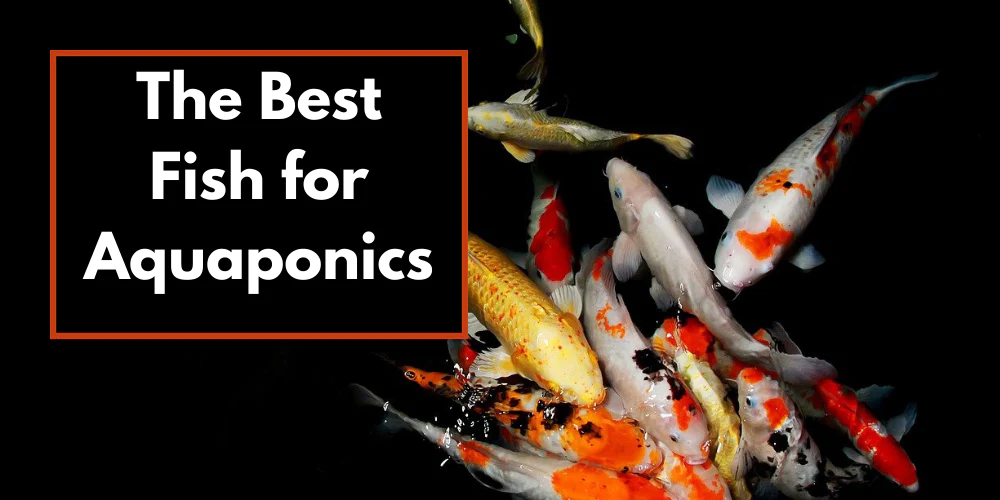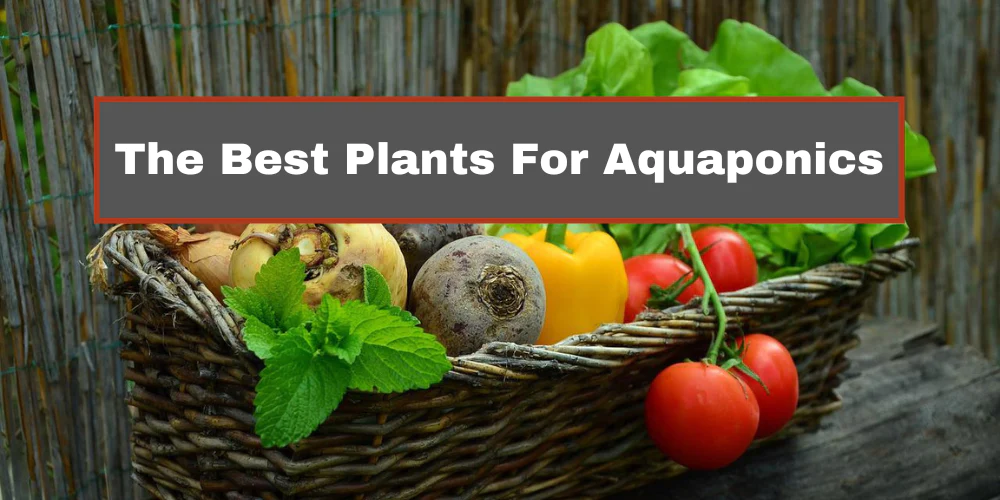Welcome to the fascinating world of aquaponics, where the harmony between aquaculture and hydroponics creates a truly sustainable and efficient system for growing plants and raising fish. As the popularity of aquaponics continues to soar, it’s time to explore the remarkable benefits that await those who embark on this creative and rewarding journey.
- What is Aquaponics?
- How Aquaponics Works
- Health Benefits of Aquaponics
- Environmental Benefits of Aquaponics
- Economic Benefits of Aquaponics
- Getting Started with Aquaponics
- Designing Your Aquaponics System
- Fish Selection for Aquaponics
- Plant Selection for Aquaponics
- Water Quality Management in Aquaponics
- Troubleshooting Common Aquaponics Issues
- Aquaponics Maintenance and Upkeep
- Scaling Up Your Aquaponics System
- Innovative Aquaponics Techniques
- Case Studies and Success Stories
- Aquaponics and Food Security
- Aquaponics Research and Future Developments
- Aquaponics Resources and Community
- Conclusion and final thoughts 💭
What is Aquaponics?

Aquaponics is a ground-breaking agricultural method that combines aquaculture, the cultivation of fish, with hydroponics, and the growth of plants in a soilless environment. This symbiotic relationship between fish and plants creates a self-sustaining ecosystem, where fish waste provides essential nutrients for plant growth. In contrast, the plants naturally filter and purify the water, creating a balanced and thriving environment.
How Aquaponics Works
At the core of an aquaponics system lies a set of fundamental components. Fish, such as tilapia or trout, are housed in a tank, their excretions releasing valuable nutrients into the water. This nutrient-rich water is then circulated to the plant beds, where plants, such as lettuce or herbs, absorb the nutrients they need for growth. In this process, beneficial bacteria play a vital role by converting harmful ammonia into nitrites and then nitrates, which serve as a valuable fertilizer for plants.
Health Benefits of Aquaponics
One of the most enticing advantages of aquaponics is the ability to harvest fresh and nutritious food right at your fingertips. Unlike traditional farming methods, where produce often travels long distances, aquaponics allows you to enjoy pesticide-free and organic fruits, vegetables, and herbs grown in your own backyard. By embracing aquaponics, you have the power to improve your dietary habits and overall health outcomes.
Environmental Benefits of Aquaponics
Aquaponics is an environmentally conscious choice for food production. It utilizes water more efficiently compared to conventional farming, requiring as little as 10% of the water consumed by traditional soil-based agriculture. Additionally, aquaponics significantly reduces water pollution and eutrophication by minimizing the release of excess nutrients into natural water bodies. By implementing aquaponics, you actively contribute to the conservation of land and precious resources.
Economic Benefits of Aquaponics
Aquaponics has the potential to yield substantial economic benefits. By cultivating your own food, you can experience cost savings on groceries and reduce reliance on store-bought produce. Furthermore, aquaponics presents opportunities for income generation through selling surplus crops to local markets or restaurants. As the aquaponics industry continues to expand, it also opens doors to job creation, fostering employment opportunities within this sustainable and rapidly growing field.
Getting Started with Aquaponics
To embark on your aquaponics journey, it is important to start by determining the space and size of your system. Consider the available area in your home or backyard and assess whether you plan to set up an indoor or outdoor system. Next, research and select fish and plants that are well-suited for your specific climate and environmental conditions. Once you’ve made these crucial decisions, you can begin setting up the necessary equipment and infrastructure, such as tanks, grow beds, and filtration systems.
Designing Your Aquaponics System
Choosing the appropriate system type is paramount to the success of your aquaponics venture. Common types include media bed systems, nutrient film technique (NFT), deep-water culture (DWC), and vertical systems. Consider factors such as available space, desired plant variety, and personal preferences when selecting the best system for your needs. Designing the layout of your system involves optimizing space utilization, ensuring efficient water flow and circulation, and creating an aesthetically pleasing setup that complements your surroundings.
Fish Selection for Aquaponics

Carefully choosing the right fish species is essential for a thriving aquaponics system. Popular choices include tilapia, trout, catfish, and koi, each with its own set of advantages and considerations. Factors such as temperature tolerance, growth rate, and compatibility with plants should be taken into account when making your selection. Maintaining the optimal fish-to-plant ratio is crucial to ensuring a balanced ecosystem, where fish provide enough nutrients for plants without overwhelming the system.
Plant Selection for Aquaponics

Aquaponics provides a fertile ground for growing a wide range of plants, including leafy greens, herbs, tomatoes, and even fruiting trees. When selecting plants for your system, consider factors such as growth rate, nutrient requirements, and compatibility with the fish and environmental conditions. By carefully choosing a diverse selection of plants, you can maximize the productivity and variety of your aquaponics system, creating an abundant and sustainable harvest.
Water Quality Management in Aquaponics
Maintaining optimal water quality is essential for the success of your aquaponics system. Regular monitoring and maintenance of pH levels ensure a suitable environment for both fish and plants. Managing ammonia, nitrite, and nitrate levels is crucial to prevent toxicity and provide a healthy ecosystem. Routine testing and adjustment of nutrient concentrations ensure that plants receive the necessary nutrients while maintaining water quality within optimal ranges.
Troubleshooting Common Aquaponics Issues
Despite its many advantages, aquaponics systems can encounter challenges that require troubleshooting. Nutrient deficiencies or excesses may arise in plants, requiring adjustments in nutrient levels or supplementation. Pests and diseases can affect both fish and plants, necessitating preventative measures and appropriate treatments. System imbalances and fluctuations, such as pH or temperature variations, may occur and need to be addressed promptly. By identifying and addressing these issues, you can maintain a thriving and resilient aquaponics system.
Aquaponics Maintenance and Upkeep
Regular maintenance and upkeep are vital to ensure the long-term success of your aquaponics system. Conducting regular system checks and inspections allows you to identify any issues or potential improvements. Cleaning and maintaining equipment, such as filters and pumps, optimize their functionality and longevity. Harvesting mature plants and replanting new ones in a continuous cycle of production ensures a consistent supply of fresh produce throughout the year.
Scaling Up Your Aquaponics System
As your confidence and expertise grow, you may consider scaling up your aquaponics operation. Expanding the size of your system or adding additional modules allows for increased production and the possibility of meeting larger demands. Furthermore, aquaponics presents exciting commercial opportunities, with the potential to supply local markets, and restaurants, or even start your own aquaponics business. However, it’s important to carefully consider the scalability of your infrastructure, the availability of resources, and the market demand before taking this leap.
Innovative Aquaponics Techniques
Aquaponics continually evolves, giving rise to innovative techniques that push the boundaries of what is possible. Vertical aquaponics systems, for example, offer a space-saving solution, making it possible to grow more in smaller areas. Controlled environments, such as greenhouses or indoor setups, allow for year-round production and protection against external factors. Integrating aquaponics with other sustainable practices, such as combining it with a pond or incorporating renewable energy sources, maximizes resource efficiency and enhances overall sustainability.
Case Studies and Success Stories
Across the globe, numerous aquaponics projects have achieved remarkable success and made a positive impact on individuals and communities. By showcasing these case studies, we gain valuable insights into the possibilities and potential of aquaponics. Stories of individuals overcoming challenges, communities transforming their food systems, and innovative projects flourishing inspire and encourage others to embark on their own aquaponics journey.
Aquaponics and Food Security
The issue of food security is a pressing concern in many parts of the world. Aquaponics offers a promising solution by providing a sustainable means of producing fresh and nutritious food locally. By addressing food scarcity and limited access to fresh produce, aquaponics has the potential to empower communities and improve their overall well-being. Community-based aquaponics initiatives, where knowledge and resources are shared, can play a significant role in achieving food security goals and fostering self-sufficiency.
Aquaponics Research and Future Developments
Scientific studies and ongoing research contribute to the continuous advancement of aquaponics. Current research focuses on areas such as optimizing fish and plant productivity, developing innovative system designs, and refining nutrient management strategies. As we delve deeper into the potential of aquaponics, exciting future developments emerge, including the integration of technology, automation, and artificial intelligence, further enhancing the efficiency and productivity of aquaponics systems.
Aquaponics Resources and Community
The aquaponics community is a vibrant and supportive network of individuals who share knowledge, experiences, and resources. Online resources, forums, and communities provide a wealth of information, guidance, and inspiration for beginners and seasoned aquaponics enthusiasts alike. Learning opportunities, such as courses, workshops, and webinars, offer valuable insights and practical skills to enhance your aquaponics journey. By connecting with fellow aquaponics enthusiasts, you can foster relationships, exchange ideas, and contribute to the collective growth of the aquaponics community.
Conclusion and final thoughts 💭
In conclusion, aquaponics is a transformative and sustainable agricultural practice that offers incredible benefits. From the convenience of having fresh and nutritious food at your fingertips to the positive environmental impact and economic opportunities, aquaponics has the potential to revolutionize the way we grow food. By embracing aquaponics and exploring its endless possibilities, you become part of a movement that empowers individuals, communities, and the future of food production. So, don’t hesitate—dive into the world of aquaponics and discover a new realm of possibilities that awaits you.



